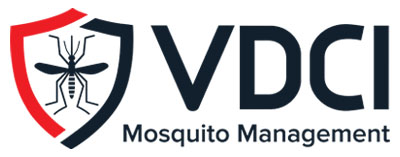What is Lyme Disease and How Does it Spread?
Lyme disease first gained attention during an outbreak in Connecticut in 1975. Today, the disease can be found worldwide. Lyme disease is caused by the bacterium Borrelia burgdorferi and transmitted through the bite of an infected Ixodes scapularis tick, also known as the blacklegged tick or deer tick. This species feeds on various mammals, with deer and rodents at the top of the list. The tick is most responsible for transmission during its nymphal stage, during which it is the size of a poppy seed. In most cases, the tick needs to be attached for 24 to 48 hours before it can transmit the bacterium.
Signs and Symptoms of Lyme Disease
Common Symptoms
- Lyme disease symptoms traditionally include fever, chills, headache, fatigue, muscle, and joint pain. If an individual is unaware that they have been bitten, it is not uncommon for symptoms to be mistaken for the flu.
- In some cases, erythema chronicum migrans (ECM) rash can occur 3 to 30 days after the tick bite. The rash can grow 12 inches or more in diameter and may take on a bullseye appearance.
- If not treated early, the individual may experience additional life-long complications and discomfort, which could include:
- Arthritis
- Irregular heartbeat
- Bell’s palsy
- Nerve pain
Treatment of Lyme Disease Infection
- A vaccine for Lyme disease is not currently available.
- When treated early with antibiotics, most people see a full recovery.
- Individuals should rest and drink plenty of fluids to aid in recovery.
Early Detection of Lyme Disease is Key
Late-stage or chronic Lyme disease can be the result of failing to properly diagnose and treat the infection early. Individuals can experience symptoms weeks, months, or years later. Treatment at a later stage is often more difficult, with varying symptoms that are often misdiagnosed or hard to resolve. Early detection is especially important during pregnancy, to prevent the infection spreading to the placenta. Early Lyme disease detection is aided by having a properly educated public and learning the appropriate preventative measures for avoiding tick bites.
Lyme Disease and the United States

Lyme disease remains the most commonly reported vector-borne illness in the United States, with most cases concentrated in the Northeast and upper Midwest. The latest case count reported by the CDC in 2023 indicates over 80,000 cases. Recent CDC estimates suggest that approximately 476,000 people may contract Lyme disease each year. It is important to note that this number likely includes patients treated based on clinical suspicion but who do not actually have Lyme disease.
This staggering figure outpaces the incidence of several other well-known diseases, including breast cancer, colon cancer, and HIV. Recognizing Lyme disease as a significant and growing public health concern, the CDC continues to emphasize personal preventive measures and integrated tick management (ITM) programs in endemic areas to help curb the spread of this infection.
A Global View of Lyme Disease

The most telling symptom of Lyme disease, the erythema chronicum migrans (ECM) rash, was first described in 1909 from Sweden. Today, it has been reported in over 80 countries from every continent (except Antarctica) and has become the most commonly reported tick-borne disease worldwide. From its first description, Lyme disease has been linked to ticks in the Ixodes ricinus complex. In Europe, the primary vector is Ixodes ricinus or the sheep tick. In Eastern Europe and Asia, including China and Japan, Ixodes persulcatus (the taiga tick) is the most important vector. In North America, Ixodes scapularis (the blacklegged tick or deer tick) is the main vector on the east coast, while on the west coast the principal vector is Ixodes pacificus (the western blacklegged tick).
Tick Talk on Ixodes scapularis
Ixodes scapularis require high humidity, so they tend to be associated with habitats that are heavily shaded and covered with leaf litter. Tick habitats also include areas where hosts are frequently observed such as brush piles, stone wall bases, wood piles, wooded areas, edges of fields, and areas with low dense woody vegetation. White-tailed deer and white-footed mice are the primary hosts in the northeast of the United States. The large habitat of these hosts allows for a wide distribution.
Ixodes scapularis require two years to complete their life cycle from egg to larvae to nymph to adult. Adults are typically active from October-May but can be found year-round if the temperature exceeds freezing. Adults prefer larger hosts such as deer and humans. Once females fully engorge on their blood meal, they drop off the host into the leaf litter where they lay an egg mass (1500-2000 eggs) in late spring, early summer. Larvae emerge from the egg mass in late summer and can attach to any size mammalian host and many bird species. After a blood meal the larvae will molt and re-emerge the following spring as a nymph. Nymphs are most active May-August. The poppy seed sized nymphs are known to be the most responsible in human disease transmission due to their extremely small size, often going unnoticed when attached. The nymphal ticks that have fed, as larvae, on infected hosts during the prior summer are now able to transmit the pathogens to people and their pets
Controlling Ticks and Lyme Disease
Individuals should take extra precautions to avoid tick-infested areas, especially during late spring, summer, and fall. It seems only logical that control of the tick vector of Lyme disease is mandatory in communities and that lowering Ixodid tick populations can significantly reduce the risk of being infected. However, control measures are not always easy or successful because the Ixodid ticks that transmit Lyme disease have intricate and complex life cycles. It takes two years to complete their life cycle, with the ability to transmit diseases in the nymphal and adult stages.
VDCI strongly feels that any Integrated Tick Management (ITM) program should strive to control the local population of ticks with minimal impact on the environment and non-target organisms and simultaneously reduce the risk of tick-borne disease transmission. However, because it is impossible to eradicate all ticks given their behavioral patterns, resilient nature and breeding potential, the program’s primary goal should be to manage tick populations within tolerable levels. This reduction is best accomplished through a customized and targeted combination of public education, surveillance, landscape management, and the judicious application of Environmental Protection Agency (EPA) approved pesticides through a variety of techniques and methods.
1: Public Education/Public Relations
Public education is an extremely important facet to the successful implementation of any tick control program. Educational materials that are readily available to the public should detail the various ways people can limit tick exposure and should include information on personal protection as well as awareness and disease information.
2: Inspection and Surveillance
The cornerstone of any successful ITM program is surveillance. Proper identification of tick species and knowledge of their bionomics focuses control efforts on the areas of concern. Potential tick-infesting habitats should be inspected and mapped into a GIS database using GPS technology. After thorough surveillance of the tick and host populations in an area, a more accurate picture of the vector dynamics can be developed and an effective and efficient control plan implemented.
Testing ticks allow us to determine the incidence of tick-borne pathogens that may cause a threat to the health and well-being of residents and visitors to public properties within an area. After pathogen detection, management practices can be developed that will reduce the number of infected ticks and simultaneously reduce the risk of human transmission. VDCI is capable of testing ticks, via approved PCR assays, for a range of common tick-borne pathogens.
Successful control of tick populations is dependent on the integration of a number of strategies including host-targeted devices and landscape management. When required, VDCI only applies pesticides approved by the EPA for the control of ticks. These products are delivered by means of hand-held application equipment, such as a spreader or backpack sprayer, and can quickly lower the tick population in targeted areas.


